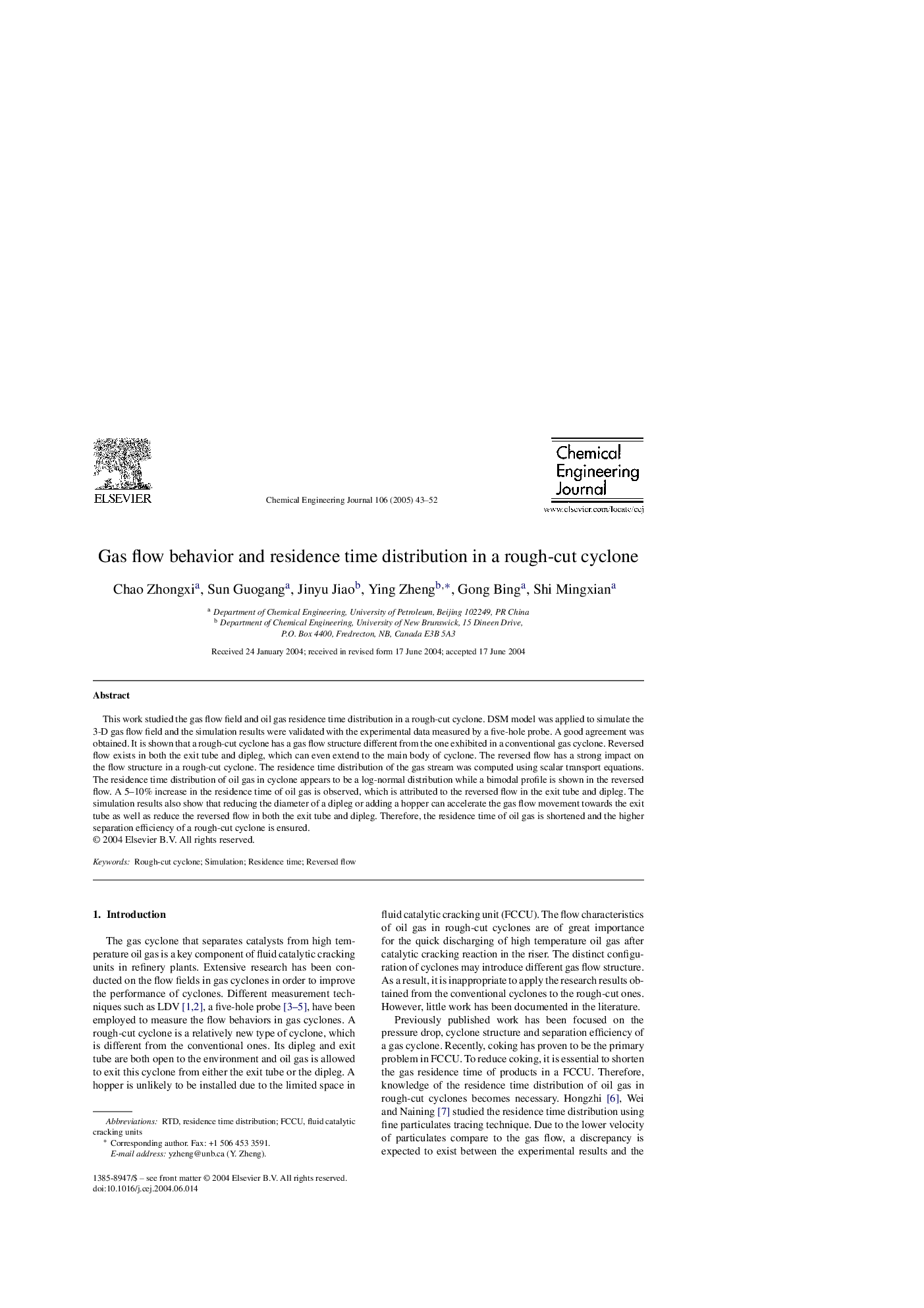| Article ID | Journal | Published Year | Pages | File Type |
|---|---|---|---|---|
| 10261147 | Chemical Engineering Journal | 2005 | 10 Pages |
Abstract
This work studied the gas flow field and oil gas residence time distribution in a rough-cut cyclone. DSM model was applied to simulate the 3-D gas flow field and the simulation results were validated with the experimental data measured by a five-hole probe. A good agreement was obtained. It is shown that a rough-cut cyclone has a gas flow structure different from the one exhibited in a conventional gas cyclone. Reversed flow exists in both the exit tube and dipleg, which can even extend to the main body of cyclone. The reversed flow has a strong impact on the flow structure in a rough-cut cyclone. The residence time distribution of the gas stream was computed using scalar transport equations. The residence time distribution of oil gas in cyclone appears to be a log-normal distribution while a bimodal profile is shown in the reversed flow. A 5-10% increase in the residence time of oil gas is observed, which is attributed to the reversed flow in the exit tube and dipleg. The simulation results also show that reducing the diameter of a dipleg or adding a hopper can accelerate the gas flow movement towards the exit tube as well as reduce the reversed flow in both the exit tube and dipleg. Therefore, the residence time of oil gas is shortened and the higher separation efficiency of a rough-cut cyclone is ensured.
Related Topics
Physical Sciences and Engineering
Chemical Engineering
Chemical Engineering (General)
Authors
Chao Zhongxi, Sun Guogang, Jinyu Jiao, Ying Zheng, Gong Bing, Shi Mingxian,
